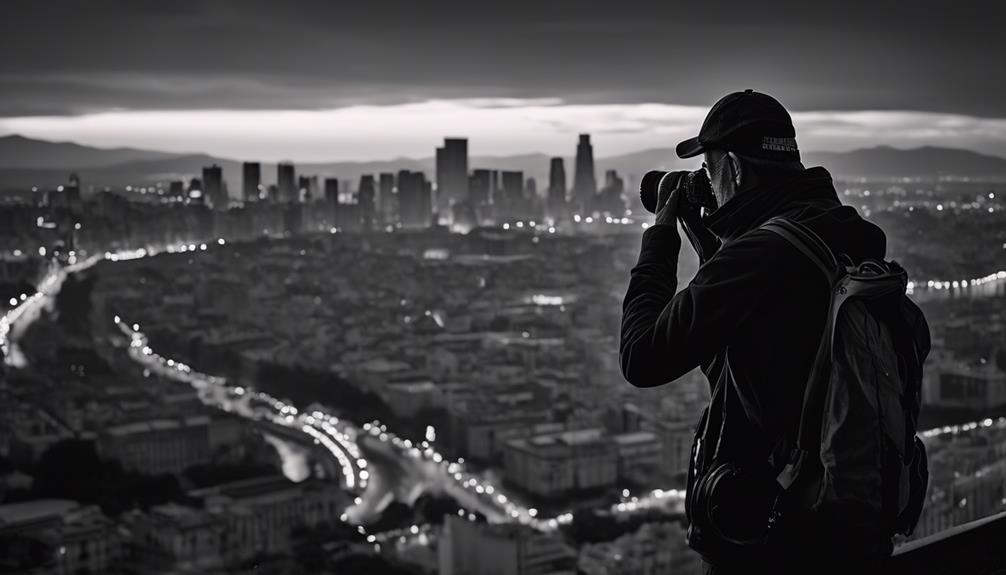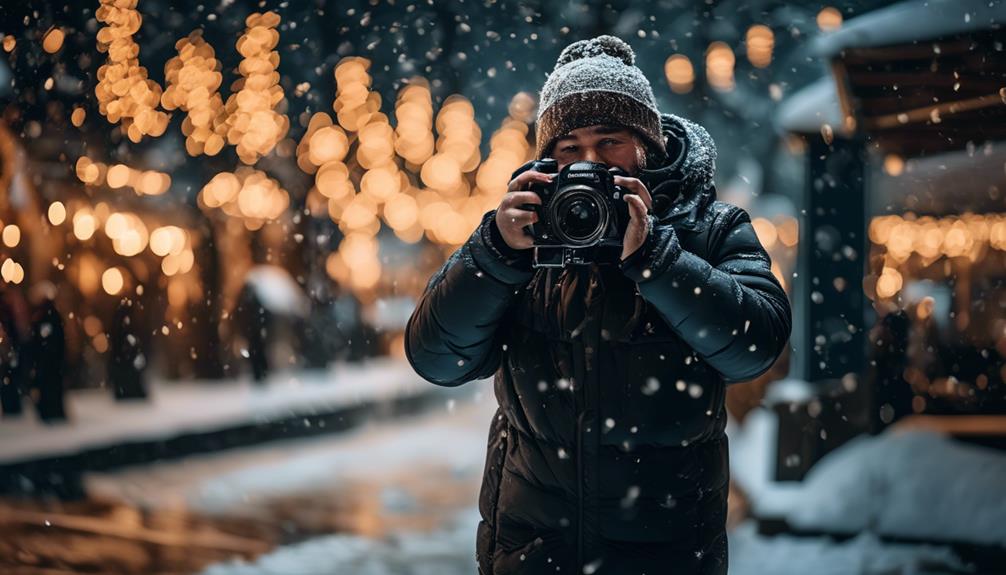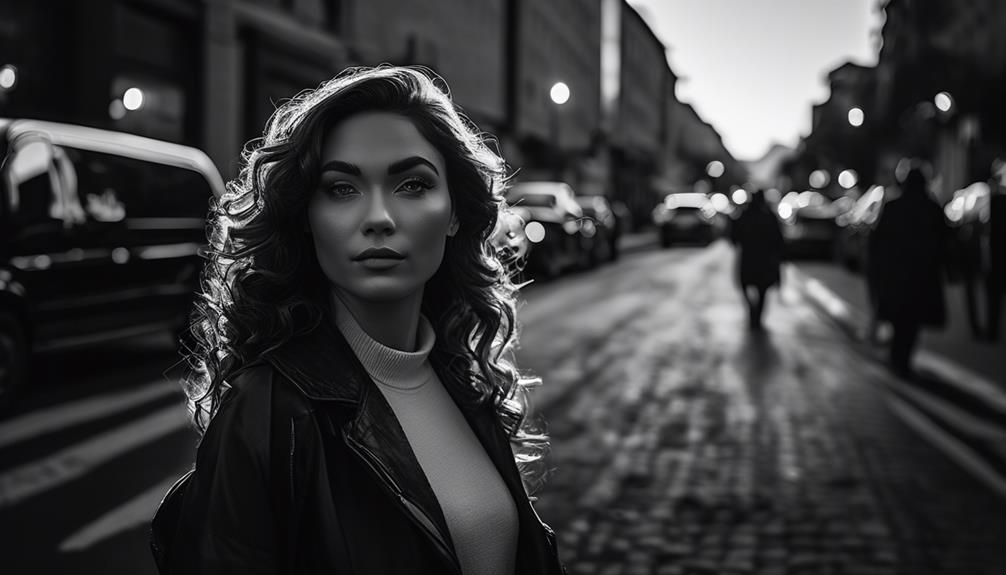Please note this post may contain affiliate links picked by me (Jay) that I have deemed may be of interest or relevant to you the reader of this.
These links do not affect the cost of the thing if you decide to purchase but i may get a little money if you choose to purchase.
For more information on my affiliate link policy click here.
When it comes to photography, there is always room to grow and expand your skills. Whether it's capturing the perfect portrait, exploring the vast landscapes, or immersing yourself in the world of wildlife, each genre presents its own unique challenges and opportunities.
As a photographer, I have found that elevating my skills across various genres has not only allowed me to broaden my creative horizons but also helped me develop a well-rounded portfolio.
In this discussion, I will share some insights and tips on how you can improve your photography skills in portrait, landscape, wildlife, street, and macro genres. So, let's dive in and discover the secrets behind capturing stunning images that will leave viewers in awe.
Key Takeaways
- Master posing techniques to create connection and authenticity in portraits
- Understand the importance of lighting and how to control and manipulate it for captivating portraits
- Use composition techniques such as the rule of thirds and leading lines to create visually appealing landscape photographs
- Patience and observation are key in wildlife and street photography to capture unique and authentic moments
Portrait Photography
Portrait photography captures the essence of an individual, bringing their unique personality and story to life through the lens. It's a genre that allows photographers to showcase the beauty, emotions, and intricacies of a person. To create compelling and innovative portraits, mastering the art of posing and lighting techniques is crucial.
Posing techniques play a significant role in portrait photography. They help to create a sense of connection and authenticity between the subject and the viewer. By guiding the subject's posture, facial expressions, and body language, photographers can capture the desired mood and convey the story they want to tell. Experimenting with different poses can lead to innovative and visually striking portraits. From candid shots to more formal and structured poses, the possibilities are endless.
Another key element in portrait photography is lighting. The way light interacts with a subject can dramatically transform the mood and atmosphere of a photograph. Understanding how to control and manipulate light allows photographers to create innovative and captivating portraits. Whether it's using natural light, artificial lighting setups, or a combination of both, the choices are vast. Experimenting with different lighting techniques, such as backlighting, side lighting, or dramatic shadows, can elevate a portrait and make it stand out.
Innovative portrait photography goes beyond the traditional norms and pushes the boundaries of creativity. It challenges photographers to think outside the box and find unique ways to capture the essence of an individual. By mastering posing techniques and lighting techniques, photographers can create captivating portraits that not only showcase the subject's personality but also inspire and engage the viewer.
Landscape Photography
With its vast landscapes and breathtaking natural beauty, landscape photography offers a captivating opportunity to capture the wonders of the world through the lens. As a photographer, I find myself constantly drawn to the challenge of capturing stunning landscapes that evoke a sense of awe and wonder.
To achieve this, I've discovered a few composition techniques that can take your landscape photography to the next level.
Firstly, the rule of thirds is a fundamental principle in landscape photography. By dividing the frame into thirds both horizontally and vertically, you can create a more balanced and visually appealing composition. Place the main elements of your landscape along these lines or at the intersections for a more dynamic and interesting shot.
Another technique to consider is leading lines. These are lines that guide the viewer's eye through the image, creating depth and drawing attention to the focal point. Look for natural elements like roads, rivers, or even tree branches that can act as leading lines and add visual interest to your composition.
Now, let's talk about lighting. The importance of lighting in landscape photography can't be overstated. The right light can transform an ordinary scene into something extraordinary. Golden hour, which occurs during sunrise and sunset, provides soft, warm light that adds a magical touch to your images. Experiment with different times of day and weather conditions to capture the perfect lighting for your landscape.
Wildlife Photography
After capturing the breathtaking landscapes, it's time to shift our focus to the vibrant and captivating world of wildlife photography. This genre allows us to dive into the raw and untamed beauty of nature, capturing the essence of animals in their natural habitats. To excel in wildlife photography, there are a few key techniques and skills that can help us capture those perfect action shots and truly showcase the dynamic nature of these creatures.
Techniques for capturing action shots in wildlife photography:
- Fast shutter speed: To freeze the movement of animals in action, a fast shutter speed is essential. This allows us to capture precise moments, such as a bird in flight or a predator chasing its prey.
- Continuous shooting mode: Wildlife is unpredictable, and capturing the perfect shot often requires taking multiple frames in rapid succession. Continuous shooting mode ensures we don't miss any crucial moments.
- Focus tracking: Animals can move quickly, making it challenging to keep them in focus. Utilizing focus tracking technology helps us maintain sharp focus on the subject, even as it moves around.
The importance of patience and observation in wildlife photography:
Wildlife photography isn't for the impatient. It requires spending long hours in the field, waiting for the perfect moment to unfold. Patience is key to capturing rare and unique shots. Additionally, keen observation is crucial to understanding animal behavior and anticipating their movements, allowing us to be in the right place at the right time.
Innovation in wildlife photography lies in pushing the boundaries of our creativity and exploring new techniques to capture the essence of these incredible creatures. By combining technical skills with patience and observation, we can unlock the true potential of wildlife photography and create images that inspire awe and admiration.
Street Photography
Capturing the vibrant essence of bustling city streets, street photography allows me to immerse myself in the energy and spontaneity of everyday life. It is a genre that requires a keen eye for composition and the ability to capture raw emotions in the blink of an eye. Street photography is all about capturing the essence of a moment, telling a story through the lens of a camera.
To excel in street photography, one must understand the importance of composition. It involves finding the right balance between the subject and the surrounding elements. By utilizing techniques such as leading lines, framing, and the rule of thirds, a photographer can create visually captivating images that draw the viewer's attention.
Furthermore, street photography is not just about capturing the physical aspects of a scene; it's about capturing the emotions and stories that unfold on the streets. It's about capturing the joy, the sadness, the excitement, and the anticipation that people experience in their daily lives. To do this, a photographer must be observant, patient, and ready to capture those fleeting moments that encapsulate the human experience.
In order to engage the audience and provide a visual representation of the concepts discussed, I have created a table showcasing the key elements of street photography composition and techniques for capturing emotions:
| Street Photography Composition | Techniques for Capturing Emotions |
|---|---|
| Leading Lines | Candid Shots |
| Framing | Timing and Anticipation |
| Rule of Thirds | Expression and Gestures |
Macro Photography
Macro photography opens up a world of intricate details and hidden beauty, allowing me to explore the fascinating microcosms that exist within our larger world. With close up focus and careful attention to detail, macro photography allows me to capture the small wonders that often go unnoticed. Here are three key aspects of macro photography that make it a captivating genre:
- Close up focus: In macro photography, the subject is magnified to reveal its intricate details. Whether it's a delicate flower petal, the pattern on an insect's wings, or the texture of a leaf, close up focus highlights the smallest elements of the subject, creating visually stunning images. This level of detail brings a sense of intimacy and allows viewers to appreciate the beauty in the often overlooked.
- Depth of field: Depth of field refers to the range of distance in a photograph that appears in sharp focus. In macro photography, achieving a shallow depth of field can be particularly effective in drawing attention to the subject and separating it from the background. By blurring the background, the subject becomes the main focus, creating a visually striking image that emphasizes the intricate details.
- Revealing the unseen: Macro photography enables us to see the world in a new light. It allows us to discover the intricate patterns, textures, and colors that exist within the tiniest of subjects. Through macro photography, we can explore the hidden beauty that exists all around us, encouraging us to appreciate the small wonders in our larger world.
Macro photography is a genre that challenges us to look closely and appreciate the often overlooked details. It invites us to explore the microcosms that exist within our larger world, revealing the beauty that lies beneath the surface. So grab your camera, get up close, and dive into the captivating world of macro photography. You never know what hidden treasures you might discover.
Frequently Asked Questions
Is It Necessary to Use a Professional Camera for Portrait Photography, or Can I Achieve Good Results With a Smartphone?
Using a smartphone for portrait photography can yield surprisingly good results. With natural lighting and a few tips, you can capture stunning images.
Experiment with different angles and compositions to add depth and creativity to your shots. Take advantage of portrait mode or editing apps to enhance the final image.
Remember, it's not just about the tools you use, but also your creativity and understanding of lighting and composition.
What Are Some Techniques to Capture the Beauty of Vast Landscapes in Landscape Photography?
When it comes to capturing the essence of urban landscapes, there are a few techniques that I've found to be highly effective.
One of my favorites is mastering long exposure techniques for dynamic landscape photography. By using a slow shutter speed, you can create stunning images that showcase the movement and energy of the city.
It's a technique that requires patience and practice, but the results are truly worth it.
How Can I Ensure the Safety of Wildlife While Photographing Them in Their Natural Habitat?
When photographing wildlife in their natural habitat, it's crucial to prioritize their safety and the conservation of their environment. Ethical photography practices involve respecting boundaries, not disturbing or stressing the animals, and avoiding any harm to their habitats.
By following these principles, we can capture stunning images while also promoting wildlife conservation. It's an exciting opportunity to showcase the beauty of these creatures and inspire others to appreciate and protect them.
Let's elevate our photography skills while being responsible stewards of the natural world.
What Are the Best Settings to Use for Street Photography to Capture Candid Moments?
When it comes to capturing those spontaneous, candid moments on the streets, the right camera settings can make all the difference. To elevate your street photography skills, here are some tips for finding the best camera settings.
- First, opt for a fast shutter speed to freeze the action and avoid any blurriness.
- Next, choose a wide aperture to create a shallow depth of field, isolating your subject from the busy background.
- Lastly, increase your ISO to ensure proper exposure in low-light situations.
Keep practicing and experimenting, and soon you'll be capturing those priceless street moments like a pro!
Are There Any Specific Equipment or Lenses That Are Essential for Macro Photography?
When it comes to macro photography, having specific equipment and lenses can make all the difference.
One essential piece of gear is a dedicated macro lens, which allows you to get up close and capture intricate details.
Additionally, using a tripod can help you achieve sharp focus by eliminating camera shake.
To further enhance your macro shots, consider using a remote shutter release or focusing rail.
These tools will help elevate your macro photography skills and capture stunning close-up images.
Conclusion
In conclusion, by exploring various genres of photography, you can elevate your skills and capture captivating images.
From the intimate moments of portrait photography to the vast beauty of landscapes, the thrilling encounters of wildlife, the vibrant energy of street scenes, and the intricate details of the macro world, each genre offers unique opportunities for creative expression.
So grab your camera, embrace the challenge, and embark on a visual adventure that will undoubtedly enhance your photography skills and broaden your artistic horizons.
Let your lens lead you to new vistas and endless possibilities!


